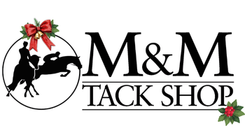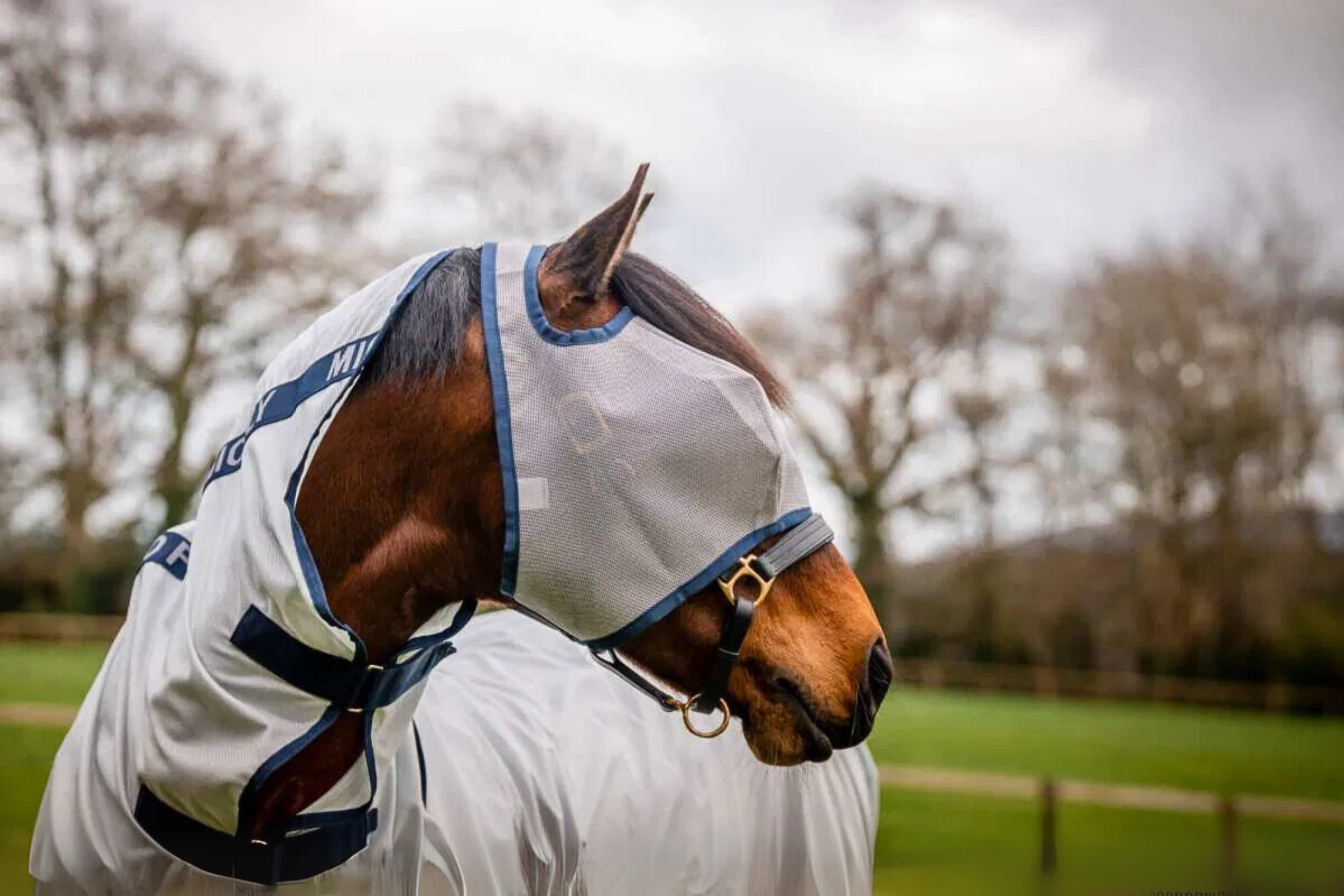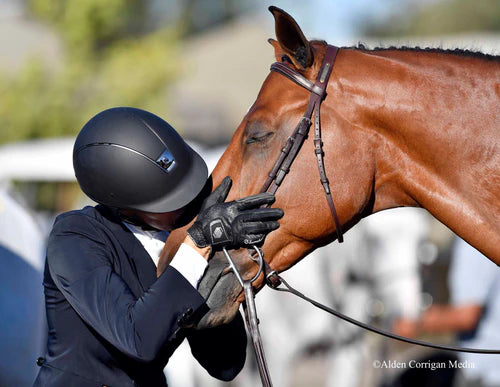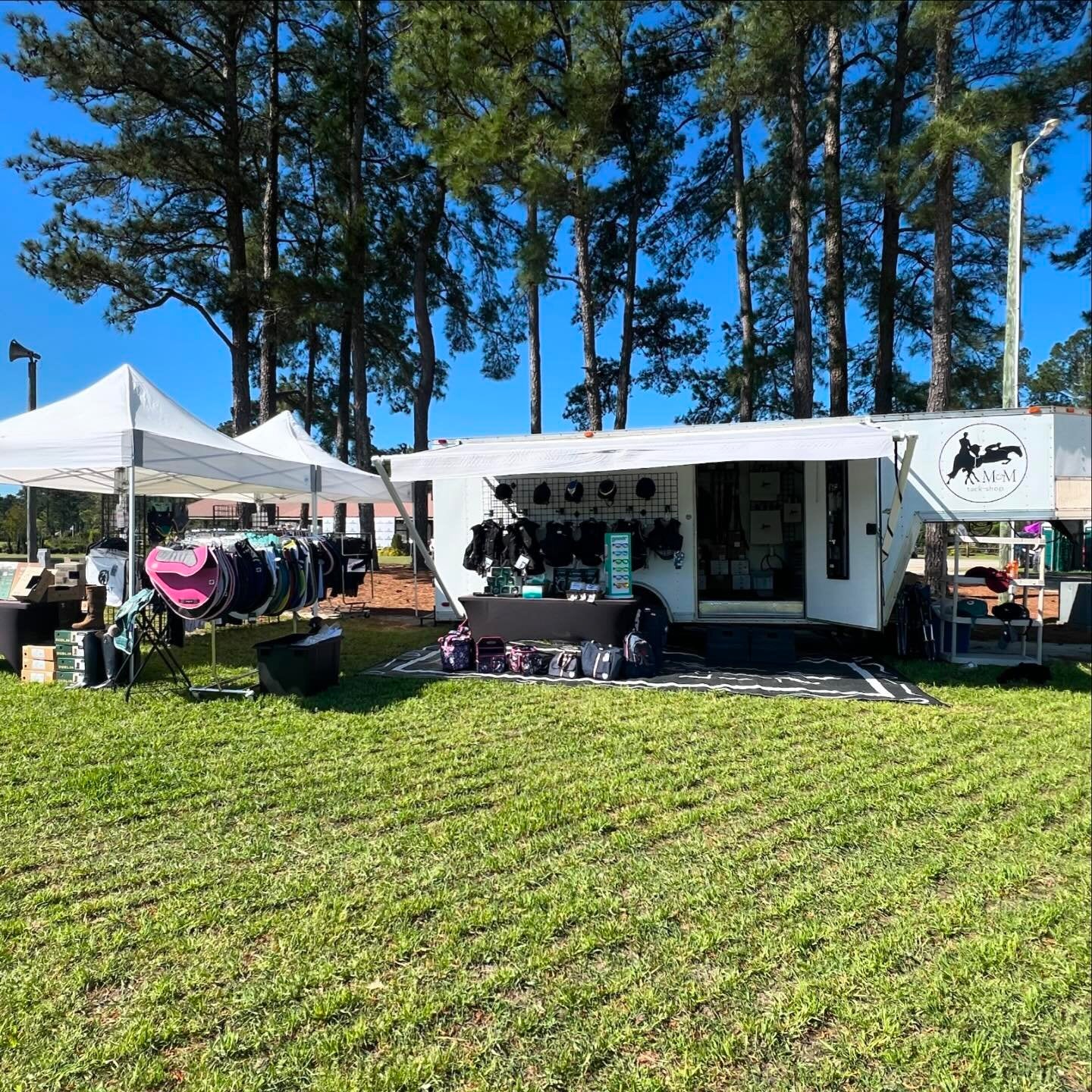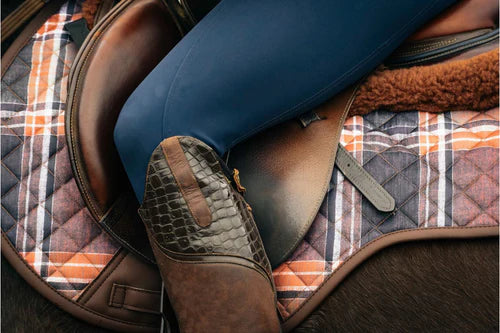As the dog days of summer settle in, the battle to protect our horses against the seemingly endless onslaught of flying insects and brutal UV rays becomes a daily task. One of the most effective weapons in your arsenal to keep your horse comfortable and protected during these trying days is the equine fly mask. These masks are designed to cover the horse's face, including the eyes, and often the ears and muzzle, with a fine mesh material that blocks insects while allowing the horse to see and hear.
Yes, your horses may look comical, but fly masks are an effective way to protect your horses’ delicate face and eyes from the irritation and potential health issues caused by bothersome insects, dangerous UV rays, and wind and dust.
Why Horses Need Fly Masks

By providing a physical barrier against flies and UV rays, fly masks help maintain your horse's comfort and overall health. Fly masks prevent flies and other insects from landing on sensitive areas of the horse's face, reducing irritation and the risk of infections. These pests can cause significant discomfort, leading to continuous head shaking, eye irritation and stress for your horse. Lightweight and breathable, fly masks serve as a comfortable barrier against these insects.
Additionally, many fly masks offer valuable UV protection, shielding your horse's sensitive skin and eyes from harmful sun rays and protecting from sunburn and eye damage. UV-protective horse fly masks are especially beneficial for horses with sensitive eyes, cataracts or chronic uveitis, protecting them not only from UV rays and insects, but also from wind, dust and allergens. Horses with these conditions often benefit from wearing a fly mask not only in the summer, but year-round.
Types of Fly Masks
Fly masks are available in various styles, each designed to meet specific needs and preferences of horses and their owners. From simple to elaborate, fly masks allow you to tailor not only your horse’s level of protection, but to ensure optimum comfort and wearability.
Standard Fly Masks

Often considered the “starter” level of fly masks, the standard fly mask provides basic protection against irritants and is the more common type of fly masks. These cover the horses’ eyes and upper face, typically ending just below the jawline. Standard fly masks have Velcro closures for easy attachment and removal, and work well for horses who are just beginning to wear a fly mask or ones that can be a bit reactive. Standard fly masks also work very well for horses who do not care for having their ears handled. These fly masks are perfect for horses who are not overly sensitive to insects or UV rays, but still can benefit from basic protection.
Fly Masks with Ears

The most distinctive feature of these fly masks is the additional fabric that covers the horse’s ears. These ear covers are usually made from durable, fine mesh or soft, stretchy materials that allow for airflow and unrestricted hearing. The mesh prevents insects from getting through while still allowing the horse to hear properly. These fly masks are ideal for horses who are particularly sensitive to flies in and around their ears and can help prevent head shaking. Additionally, horse fly masks with ears can help protect against painful sunburn and dangerous UV rays.
Long Nose Fly Masks

Long nose fly masks extend down to cover the horses’ nose to the nostrils, offering full face protection. These fly masks are especially useful for horses with white markings or pink skin that are prone to sunburn on their noses, or those that experience irritation from flies around their nostrils. Long Nose Fly Masks are available with or without ear protection, and with either mesh or fringe at the nose.
Key Features to Consider When Shopping for a Fly Mask
-
Material: When selecting a fly mask, consider breathable mesh material that allows airflow with proper padding will enhance your horses’ comfort. Fly masks made from lightweight, durable polyester or nylon mesh allow for optimum airflow while keeping bothersome insects away. Soft fleece or fabric is often used around the edges or noseband to prevent rubbing and for added comfort.
-
Visibility: Ensure that the fly mask does not impair your horse’s vision or hearing, if it has ears. High quality fly masks are designed to allow your horse to see and hear normally while being worn.
-
UV Protection: Many fly mask styles and brands are available with special UV-blocking coatings that help protect the horse’s skin and eyes from sun damage. If your horse has sensitive or pink skin, a light coat, or eye issues, these fly masks may better suit your horse.
-
Fit & Comfort: It is crucial to choose a fly mask that fits your horse well without being too tight or too loose. An ill-fitting horse fly mask can inhibit vision, restrict movement and cause chafing or pressure sores.
-
Durability: Since horse fly masks are primarily worn outside, they are constructed to be durable. However, it is necessary to match the durability of your fly mask to your horse’s behavior. Some horses never try to remove or rub their masks, while others consider it to be an Olympic sport. Choose the material and construction that will best suit your horse.
-
Ease of Use: Look for masks that are easy to put on and take off, and match your fly mask style to your horses’ temperament. Sensitive or reactive horses may be happier with basic fly mask styles that don’t touch their ears or nose, while steadier horses may be content with a fully loaded fly mask complete with ears and a long nose.
Our Favorite Fly Protection Brands
-
Cashel Company: A perennial favorite for equestrians intent on protecting their horse’s eyes, Cashel horse fly masks are prized for their durability and comfort. Constructed of soft mesh with Cashel’s patented three hole cap and double dart construction, these fly masks hold material well away from sensitive eyes, lashes and temples without damaging the forelock. This provides a more natural and complete field of vision. Cashel Crusader fly masks also offer excellent UV protection by blocking up to 70% of the sun’s damaging UV rays, protecting horses from eye problems and sunburn. Cashel’s Quiet Ride Fly Mask is perfect for protecting your horse during rides from biting flies and gnats and eliminating head tossing and stress caused by these bothersome insects.
-
Majyk Equipe: Majyk Equipe fly masks for horses are known for their innovative design and high-quality materials, offering horses excellent protection from bothersome insects and harmful UV rays. These masks are crafted from lightweight, breathable mesh with soft fleece trim that ensures maximum airflow, keeping the horse cool and comfortable even in the hottest weather. These masks are designed with a secure, yet gentle fit to prevent rubbing or discomfort. Majyk Equipe horse fly masks also incorporate strategic mesh placement to provide clear visibility while safeguarding your horse's eyes and ears. They are durable, easy to clean, and built to withstand daily wear, making them a reliable choice for horse owners who prioritize both protection and comfort for their horses.
-
Shires Equestrian: Shires fly masks are a popular choice among horse owners for their blend of durability, comfort, and effective protection. These masks are constructed from fine, sturdy mesh that shields the horse's eyes, ears, and face from flies, insects, and damaging UV rays. Shires offers a variety of fly mask designs, including those with extended nose coverage or detachable ears, allowing owners to select the best option for their horse's needs. The masks are designed to fit securely without being too tight, with soft fleece padding along the seams to prevent rubbing and irritation. Shires fly masks also provide excellent visibility, ensuring that horses can see clearly while wearing them. Easy to clean and designed to last, Shires fly masks are a reliable choice for maintaining a horse's comfort and protection throughout the fly season.
Tips for Fitting Your Fly Mask
Measuring and fitting your horse for an equine fly mask involves a few simple steps to ensure the mask provides effective protection and comfort.

Measure Your Horse:
-
Head Length: Measure from the middle of the horse's forehead (between the ears) down to the middle of the nose. This will give you the head length.
-
Head Circumference: Measure around the horse’s head, just behind the ears, where the halter would sit. This gives you the head circumference.
-
Muzzle Width: Measure the width of your horse's muzzle by placing the tape across the widest part of the nose.
Consult the Manufacturer’s Size Chart:
-
Different brands may have slightly different sizing, so compare your measurements with the manufacturer’s sizing chart to select the appropriate size.
-
If your horse’s measurements are between sizes, it’s usually better to choose the larger size to prevent the mask from being too tight.
Adjust as Necessary:
-
If the mask seems too loose or too tight in certain areas, check for adjustable straps or consider trying a different size or brand that might offer a better fit.
Common Fly Mask Mistakes to Avoid
When fitting and using a fly mask for your horse, it's important to avoid common mistakes that can lead to discomfort, ineffectiveness, or even injury. Here are some common horse fly mask mistakes to avoid:
-
Size Matters: Choose the correct size—too tight causes rubbing; too loose allows insects in.
-
Eye Clearance: Ensure the mask doesn’t touch your horse’s eyes to prevent irritation.
-
Ear Comfort: If your fly mask has ears covers, make sure they fit without pinching or rubbing.
-
Muzzle Fit: Your fly mask shouldn’t interfere with eating, drinking, or breathing.
-
Regular Checks: Frequently check the fit and condition of the mask, adjusting as needed.
-
Breaks: Don’t leave the mask on 24/7; give your horse breaks, especially at night.
-
Weather Consideration: Use a breathable mask in hot weather; ensure UV protection if needed.
-
Keep It Clean: Regularly clean the mask to prevent dirt buildup and skin irritation.
-
Monitor Behavior: Watch for signs of discomfort, like rubbing or head shaking.
-
Proper Securing: Fasten straps securely—not too tight, not too loose.
Finding the Best Fly Mask for Your Horse

Finding the best fly mask for your horse is more than just a seasonal necessity, it’s a key part of ensuring its comfort, health, and happiness throughout the warmer months. Flies and biting insects can cause significant anxiety and irritation, leading to head tossing, eye damage, and general discomfort. The right fly mask acts as a shield, keeping your horse comfortable and protected during fly season
When shopping for a fly mask, consider features such as fit and comfort, lightweight breathable mesh material, and built in UV protection. Look for designs that stay securely in place without rubbing, and consider styles with fleece or soft linings for added comfort.
Durability should also be a priority, especially for horses who are turned out in groups or for more rambunctious horses. A well-constructed mask with reinforced stitching and quality materials can withstand daily wear and rough play. Finally, ease of use matters, quick-release closures and machine washable materials make daily use and cleaning simple for busy barn routines.
By taking the time to choose a fly mask that meets your horse’s specific needs, you can help them enjoy a more relaxed, fly-free summer, without constant agitation, discomfort, or worry. A good mask is more than just another piece of gear, it’s a source of comfort, confidence, and peace of mind for your equine best friend.

